Escaping the Box
Written by
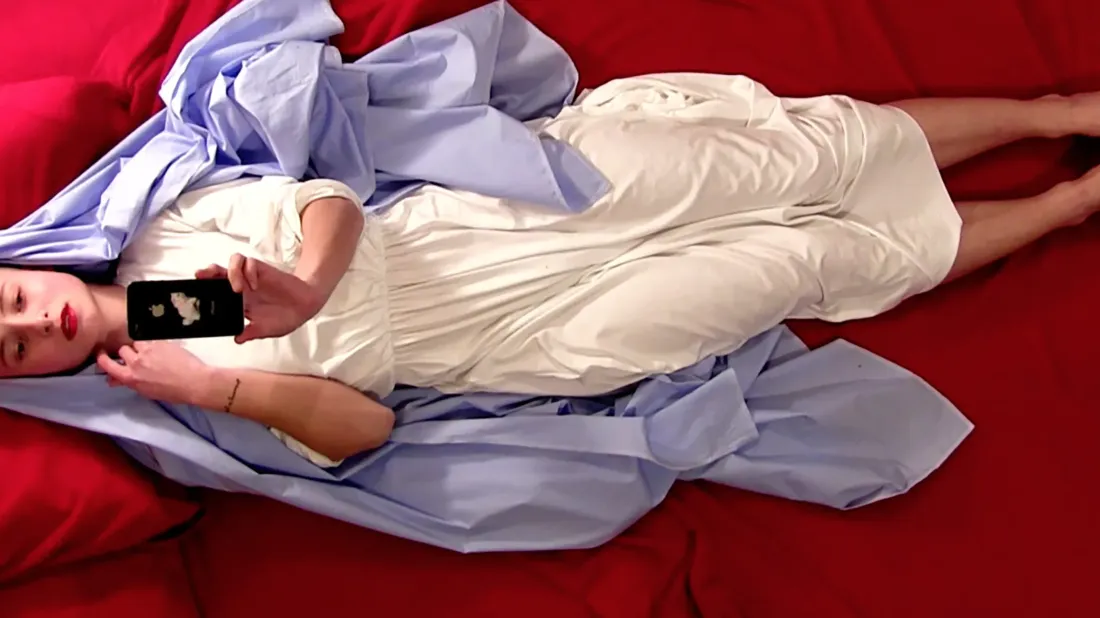
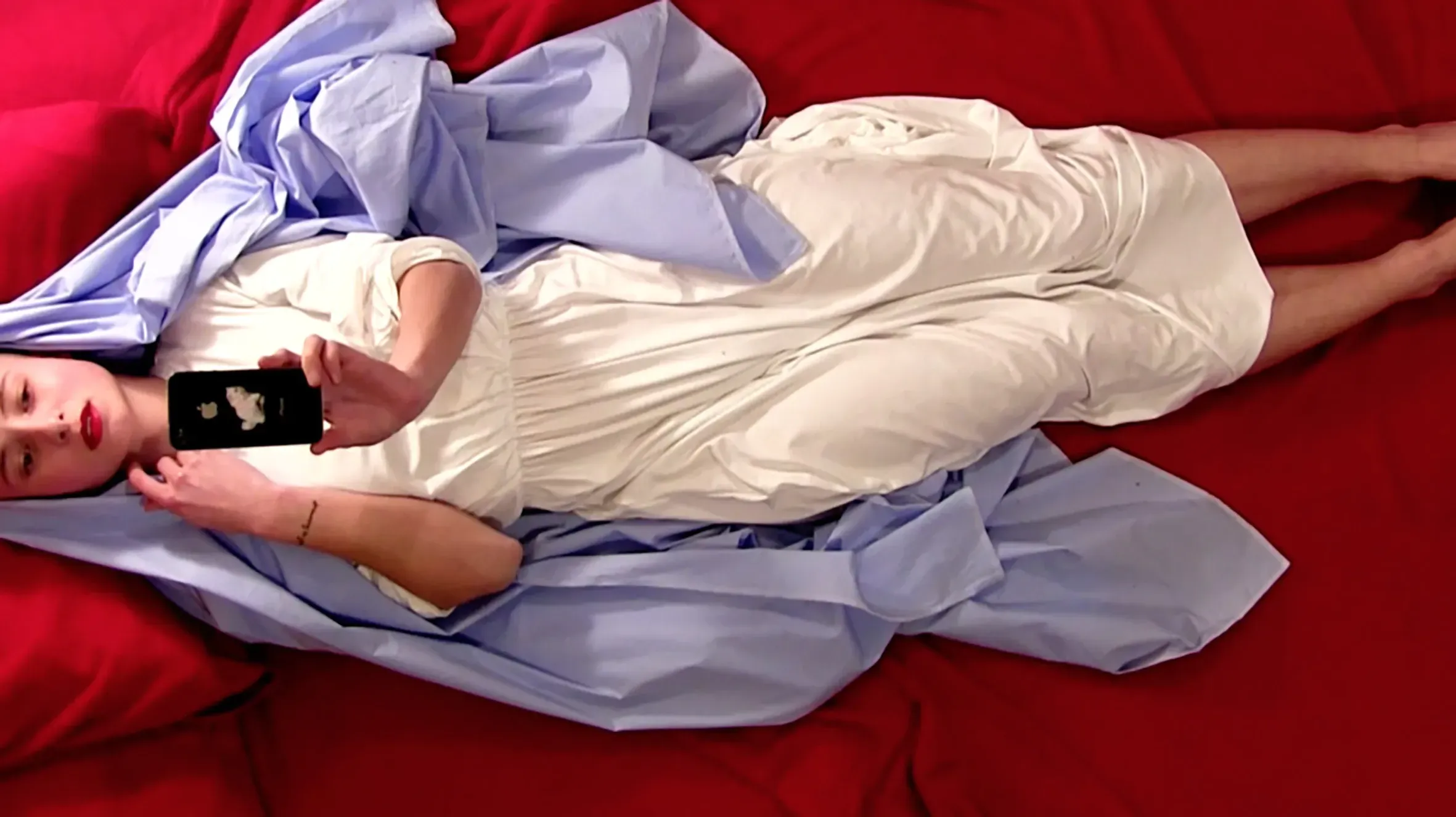
In 2001, when City Gallery Wellington held its first survey of contemporary New Zealand art Prospect: New Zealand Art Now (a programme that has quietly disappeared into the global haze), three of the 35 artists presented moving image work. 15 years on and things have changed dramatically. Moving image is now the dominant media in our public galleries.
Affordable data projection, LCD screens and digital players have long seen moving image escape the box - reflective of the presence of moving image in our lives across a diversity of formats. A survey across the Wellington region currently shows the myriad of ways and approaches moving image is now being presented.
At City Gallery senior curator Robert Leonard has provided a considered programme of moving image art, contemporary and historical over the last two years. The presentation of a diversity of strong approaches to the medium over the exhibition programme has felt as thoughtful as it would have been once for a curator over the presentation of painting. This is one of City Gallery’s current great strengths.
Currently the entire top floor of the gallery is given over to Bullet Time, providing strong viewing chambers for the work of two established video artists who work keenly with notions of time in moving image, Steve Carr and Daniel Crooks. Sure, the exhibition is noteworthy for the strong use of the gallery space and quality of work. Yet what really makes this exhibition kick is placing at its centre work by two pioneers in motion photography, Eadweard Muybridge and Harold Edgerton. It not only allows us to consider the historical precedents for these artists work, but also our own fixation with digitally pausing, slowing, slicing and dicing screen time.
Video Station
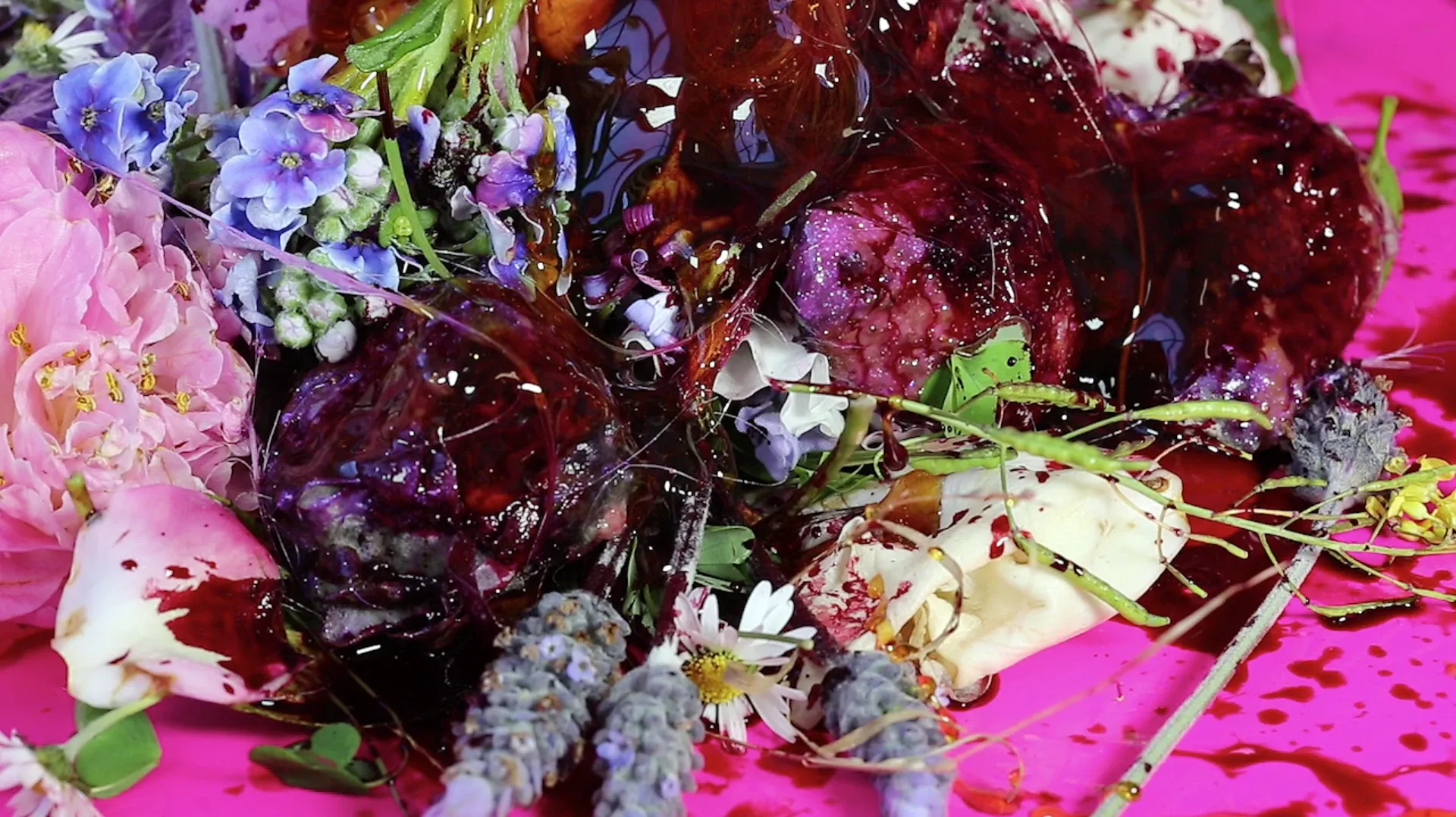
Laura Duffy's 'Food Fat Insanity' in Mason's Lane, Wellington 2016
Across town moving image agency Circuit have teamed up with Wellington City Council since December last year to present New Zealand’s first permanent public video art display – further enhancing Wellington’s reputation for the quality of its public art programme. On a landing along what was once a dark, dirty little staircase between The Terrace and Lambton Quay, Mason’s Lane, has been embedded a screen behind shockproof glass playing a 24-hour programme of video art. Works change monthly.
For once video gets to play deliciously to its context. Currently playing, Jordana Bragg’s ‘how to water the roses (1)’ provides a place of contemplation at which to pause on your journey - an alternate take on the Catholic Virgin Mary grotto and the image of the suffering woman. With its sappy shop advertising display artifice, counterpointed by a text critical of the way we portray female pain (from Leslie Jamison's essay ‘Grand Unified Theory of Female Pain’) and a strong beatific central performance, the work as a mirror smartly touches off how advertising romanticises the pain of women, much as Christianity has.
In March at Mason’s was a work by another strong emerging artist engaged with the portrayal of women through advertising, Laura Duffy. ‘Food Fat Insanity’ lusciously, painterly plays off the synthetic treatment of food and nature in advertising with a pouring on of excessive colour and textures, food and flora onto a plate before us, until visual tastiness turns toxic. A pancake excessively dressed, the work is a satisfying aesthetic and conceptual dessert. As the congealing mass takes on the form of a bodily organ we start to sickeningly detect the presence of the objectified human form.
First up in this Circuit series was a work by Denise Batchelor in which a beetle appeared suspended in space, as if the work of revitalising the urban space might be being done or undone by nature at work. Batchelor has a great strength in her work in bringing us in closer relationship with nature through moving image to question our own behaviour in return. Again moving image provides a kind of mirror.
Immersed
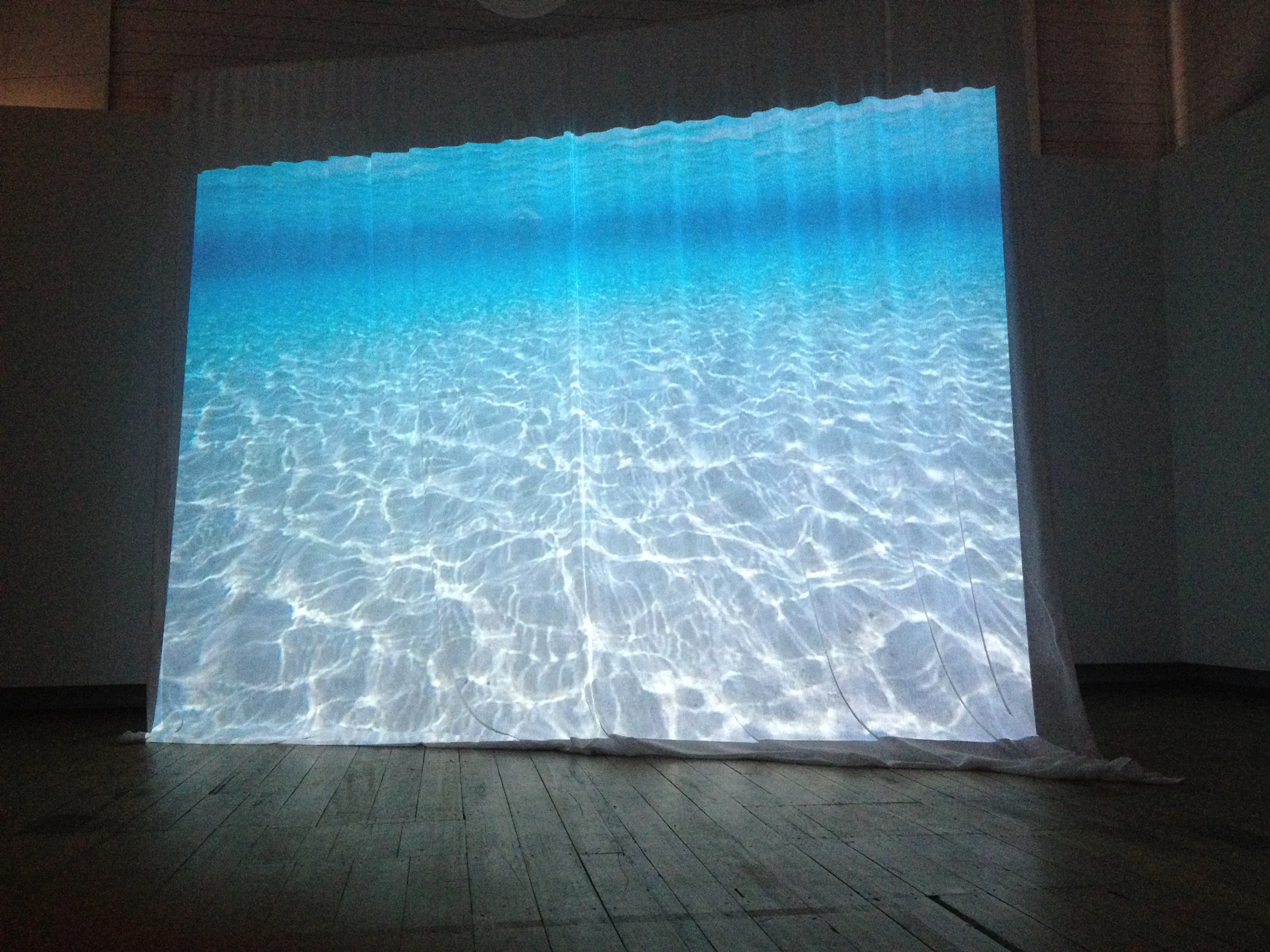
Work from 'Just one breath' Denise Batchelor, Aratoi, Masterton
Batchelor currently has a sizeable installation at Aratoi Gallery in Masterton over the Rimutakas, Just One Breath. This suite of work is the result of time in the Bahamas as a participant in a symposium alongside the international free diving competition. In a darkened, high ceilinged room through sound and movement the installation effectively immerses you in an immense blue.
The sense of floating stillness and of sensual deprivation makes you feel part of the fabric of nature. The screen becomes a kind of sensual curtain - one large projection is onto a free flowing sheet - where you can become absorbed within the projection. Yet you feel the surface tension of being alien to this environment.
Some of the work in Just One Breath feels experimental rather than satisfying in itself. As a whole there’s a bit of a hodge-podge of different approaches and framing devices. Best remains Batchelor’s close camera engagement with other lifeforms: a careful cat and mouse game with a crab, antennae twitching, which ultimately results in an attack on the camera. Also notable are short looped film of free dive ascents and descents, where bubbles transform into digital amoeba. You feel yourself disappearing into the film.
Two other exhibitions in Wellington left me interested but wanting far more - presenting excerpts from bigger planned works. Heather Hayward’s Hidden City at Enjoy hinges together nicely two large projections in the corner of the room. One is the view through a car window travelling north, while the other surveys the scene of a Wellington street from above a bus tunnel, a man appearing and disappearing from view in the middle of the street. We are deprived of the larger narrative contained in Hayward’s bigger planned film work, and also what sounds like a promising exploration of different forms of economic exchange.
Etienne de France meanwhile is the latest international artist in resident with Massey to be given a studio and exhibition space at the end of Clyde Quay Wharf: Te Whare Hera Gallery. The current exhibition there is of a collection of costume, drawings, objects and stills from a film which is a work-in-progress whilst on residence. On paper again the premise sounds interesting (a scientific team exploring water contamination in a local river) but we’re not given enough visually to go on for exhibition. I’m looking forward to seeing the eventual work.
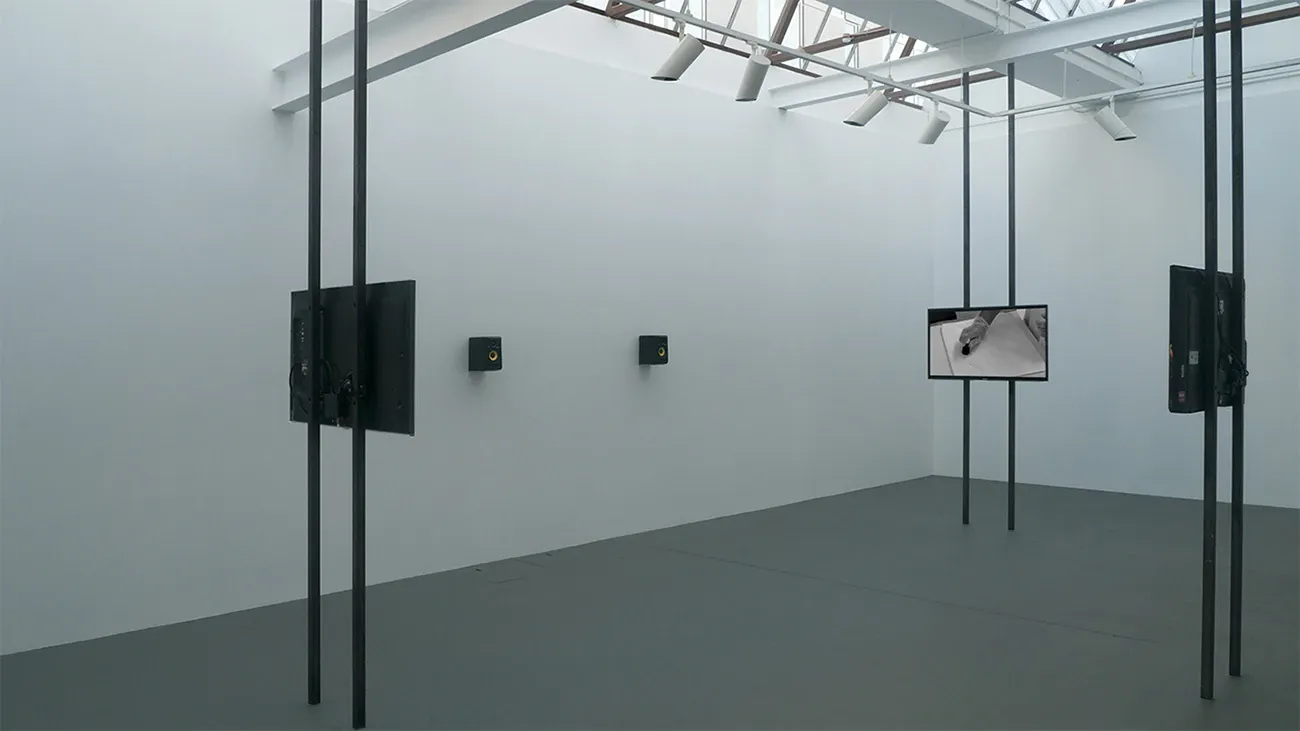
Infinitessimals, Sonya Lacey, installation, The Engine Room
Last month at Massey’s Engine Room gallery was a superb new installation work by Sonya Lacey, Infinitesimals. While hampered by gallery light and sound issues, the work was very intelligently spatially laid out, to amplify its poetic concerns over three screens and a commissioned soundwork. The interaction between different moving image and sound components enabled Lacey to explore the transmission of information through absorption of the senses, a light-filled dilution into abstraction, while providing a dynamic play of meaning between text and image.
In Lacey’s gentle, exquisite, measured work there’s the sense of being inside language itself, learning to find new ways to read meaning in the space between disparate resonant trace elements. The work is now on show at The Physics Room in Christchurch and comes highly recommended.
Striking surveying all of this work across Wellington is not just the inventive use of moving image in space, but also that here we have a handful of female artists with young exhibition practices working in new ways with moving image. They are finding new ways to absorb us in the world.
- Dilutions and Infinitesimals, Sonya Lacey, The Physics Room, Christchurch, until 28 May
- Just one breath, Denise Batchelor, Aratoi, Masterton, until 22 May
- ‘How to water the roses (3)’, Jordana Bragg, Mason’s Lane, Wellington, until 5 May
- Hidden City, Heather Hayward, Enjoy Gallery, until 7 May
- From The Green Vessel, Etienne de France, Te Whare Hera Gallery, until 7 May
- Bullet Time, City Gallery Wellington, until 10 July